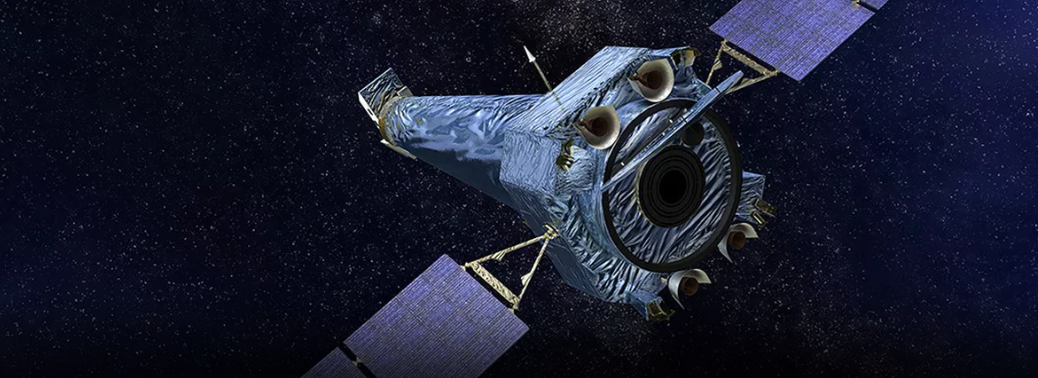Chandra Observatory
19, Oct 2018

Prelims level : Space
Mains level : Awareness in the fields of IT, Space, Computers, Robotics, Nano-technology
In News:
- NASA’s Chandra X-ray telescope which observes galaxies from the Earth’s orbit is back in action after suffering a technical glitch and going into safe mode.
- The Glitch occurred in one of Chandra’s gyroscopes, scientists said.
Background:
- The Chandra X-ray Observatory (CXO), previously known as the Advanced X-ray Astrophysics Facility (AXAF), is a Flagship-class space observatory launched on STS-93 by NASA on July 23, 1999
- NASA’s Chandra X-ray Observatory is a telescope specially designed to detect X-ray emission from very hot regions of the Universe such as exploded stars, clusters of galaxies, and matter around black holes.
- Because X-rays are absorbed by Earth’s atmosphere, Chandra must orbit above it, up to an altitude of 139,000 km (86,500 mi) in space.
- Chandra is sensitive to X-ray sources 100 times fainter than any previous X-ray telescope, enabled by the high angular resolution of its mirrors.
- Since the Earth’s atmosphere absorbs the vast majority of X-rays, they are not detectable from Earth-based telescopes; therefore space-based telescopes are required to make these observations.
- Chandra is an Earth satellite in a 64-hour orbit, and its mission is ongoing as of 2018. The Smithsonian’s Astrophysical Observatory in Cambridge, MA, hosts the Chandra X-ray Center which operates the satellite, processes the data, and distributes it to scientists around the world for analysis. Although nothing can escape the incredible gravity of a black hole, not even light, the Chandra X-ray Observatory will be able to study particles up to the last millisecond before they are sucked inside. The Chandra X-ray Observatory’s resolving power is 0.5 arc-seconds — equal to the ability to read the letters of a stop sign at a distance of 12 miles. Put another way, Chandra’s resolving power is equivalent to the ability to read a 1-centimeter newspaper headline at the distance of a half-mile.
What makes Chandra Unique?
- Chandra has outstanding imaging precision; its mirrors are the largest, the most perfectly aligned, and smoothest ever built.
- The images Chandra makes are 25 times sharper than the best previous x-ray telescope.






